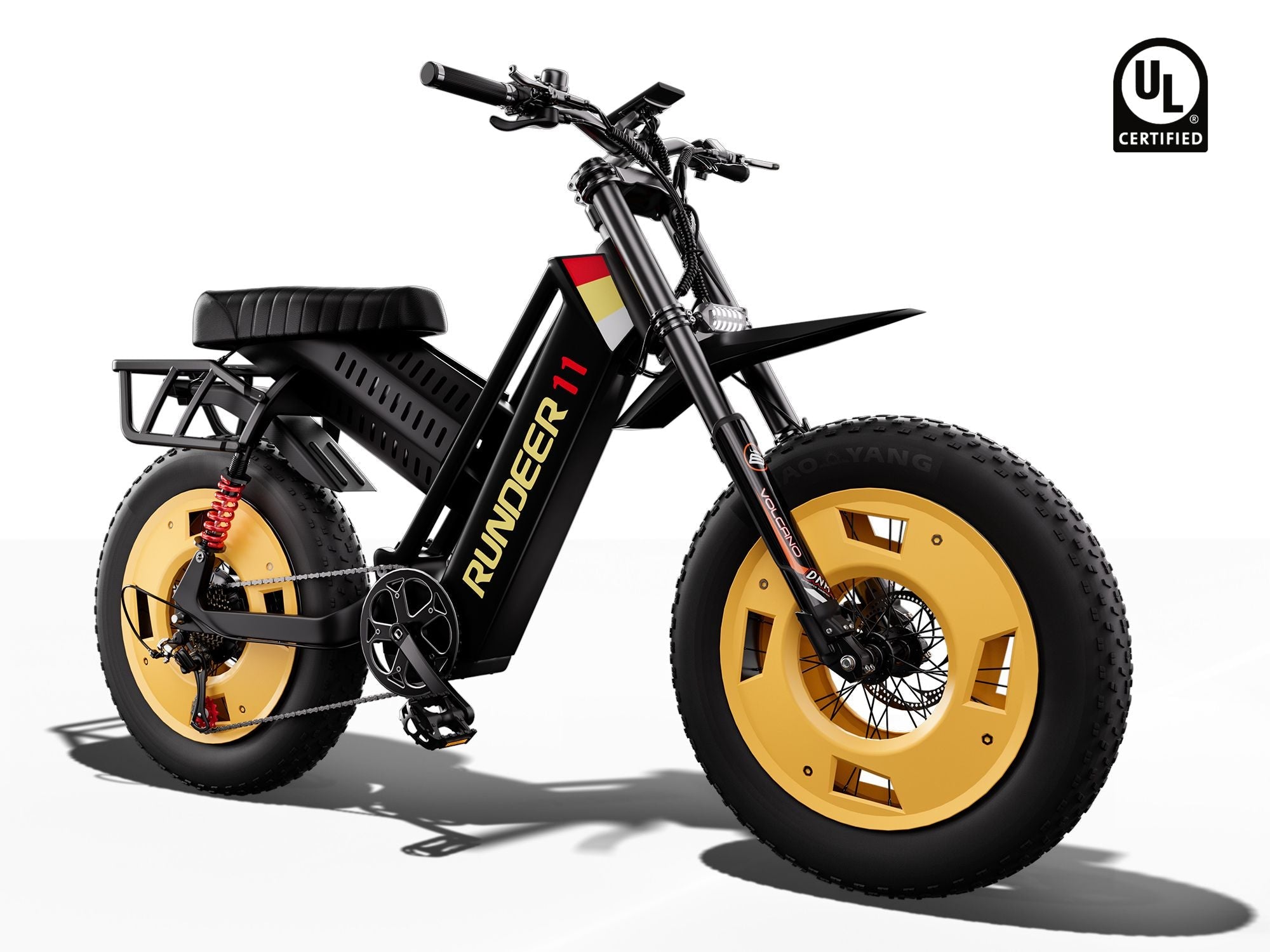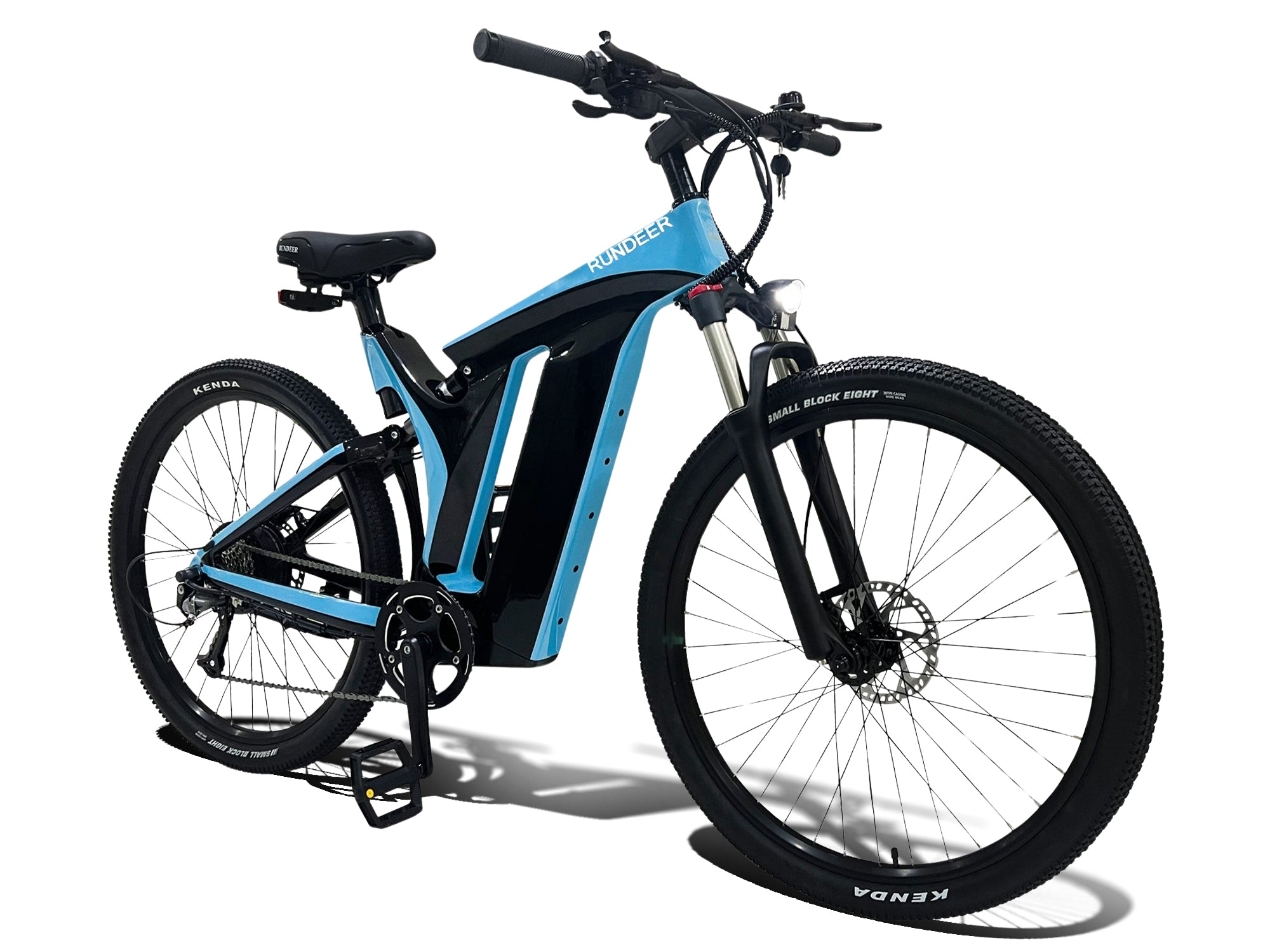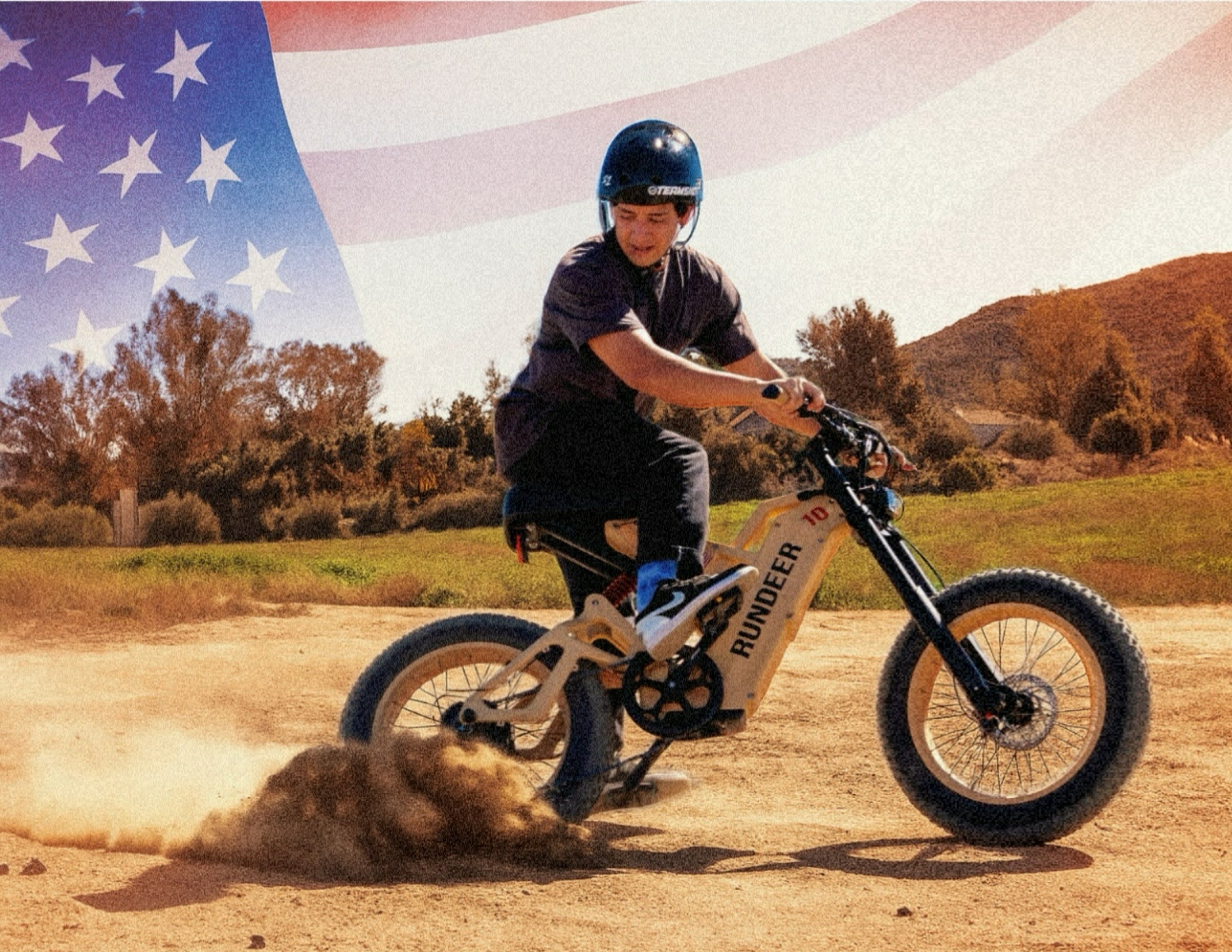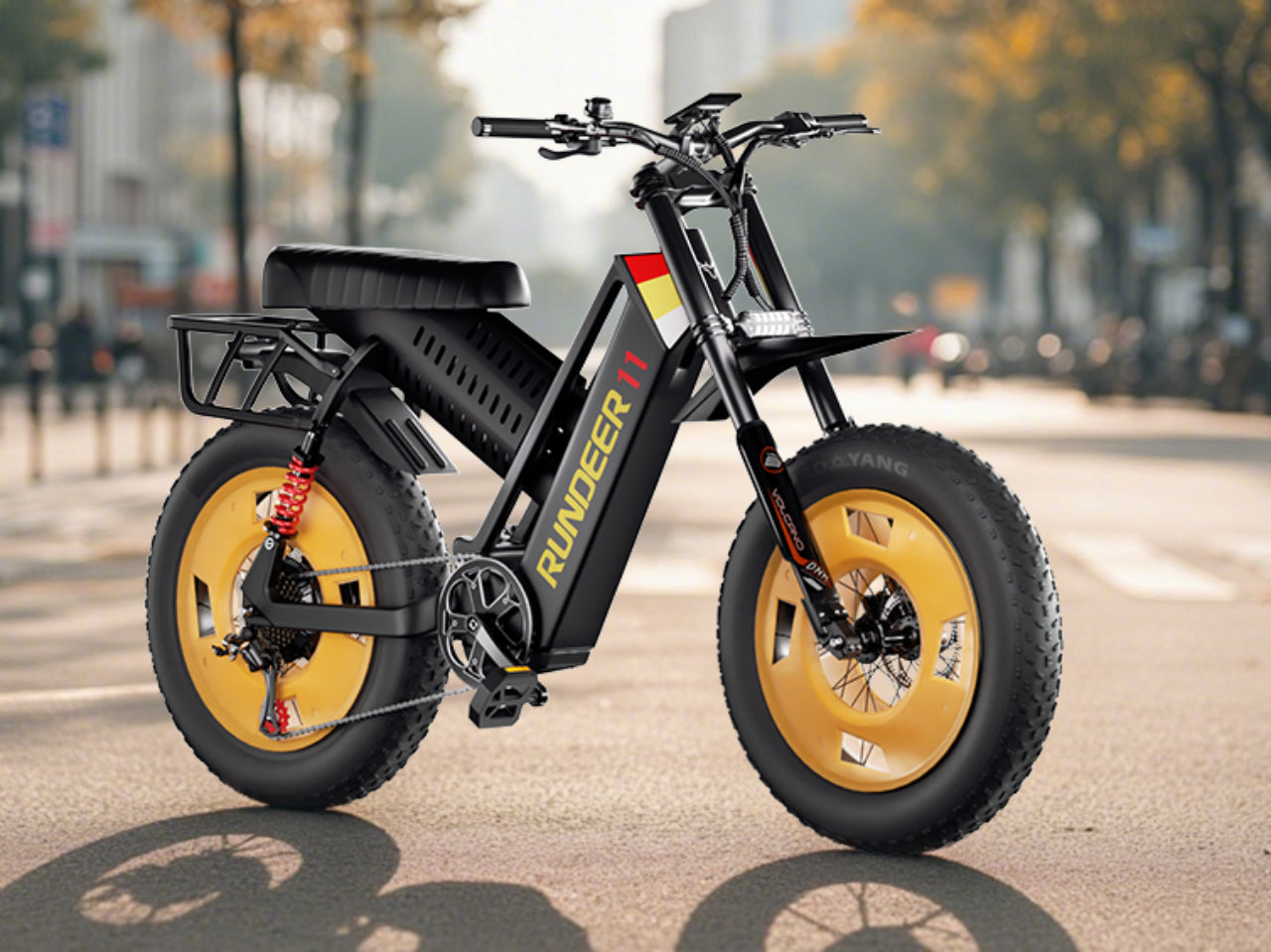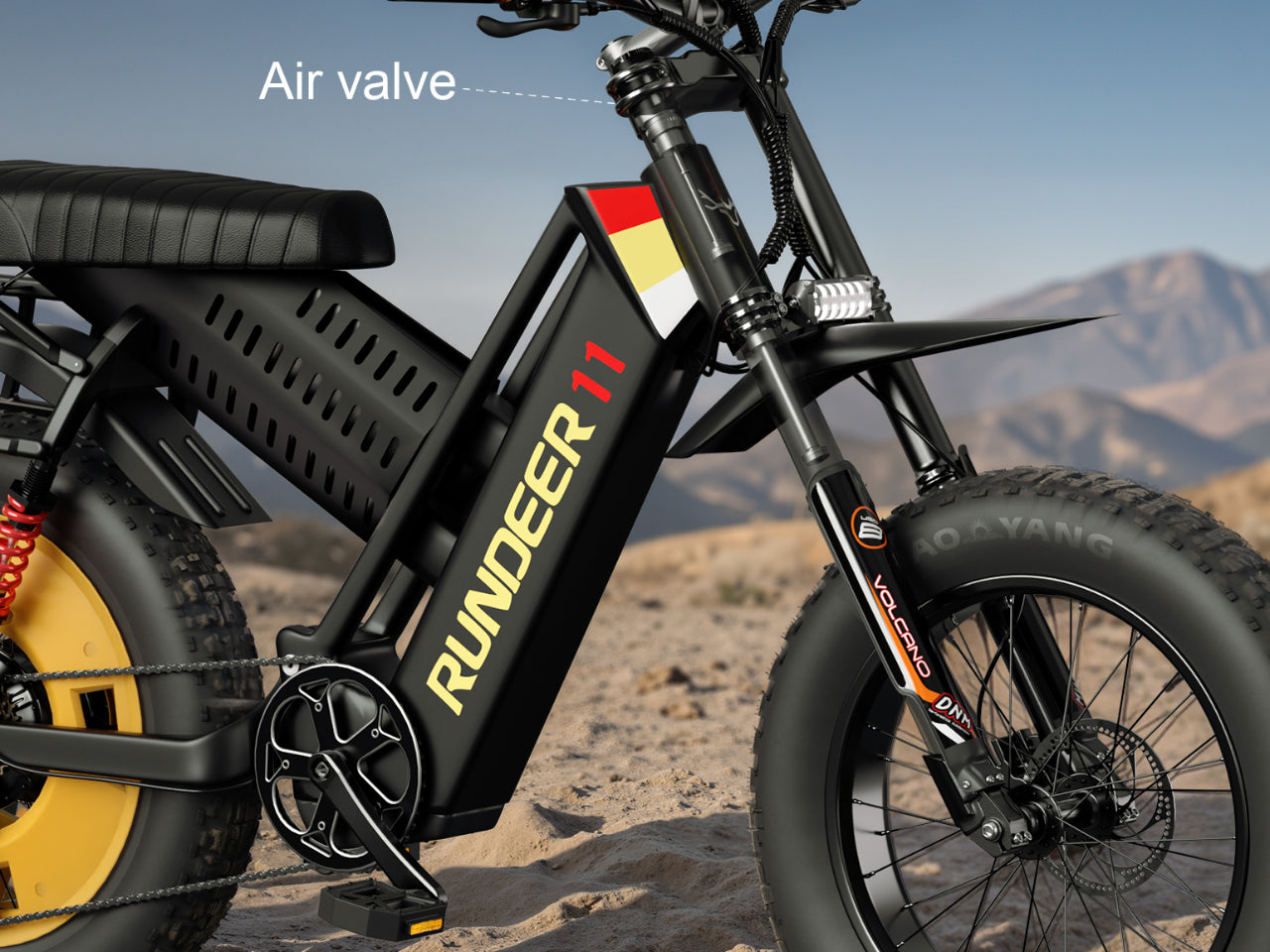Picture this: You’re bombing down a rocky singletrack, roots and loose stones everywhere. On a hardtail electric bike, your arms are bracing, your legs are working overtime, and you’re praying you don’t catch a hidden rock at the wrong angle. On a full suspension electric bike, the bike just… floats. The wheels hug the ground, the bumps fade into the background, and you’re grinning instead of clenching your jaw.
That’s the magic of a full suspension e-MTB. But is it always the right choice? Let’s break it down.
Hardtail Electric Bikes – The No-Nonsense Workhorse
A hardtail electric bike has a suspension fork in the front, but the rear end is rigid. The frame is lighter, the design is simpler, and the feel is direct.
✅ Advantages:
-
Efficiency on climbs – Every watt goes straight to the rear wheel.
-
Lightweight – Easier to carry and accelerate.
-
Lower price – Great for budget-conscious riders.
-
Low maintenance – Fewer moving parts means less to service.
❌ Disadvantages:
-
Harsher ride – Your body becomes the suspension on rough terrain.
-
Reduced traction – Rear wheel can bounce on loose or rocky surfaces.
-
Limited downhill capability – Not ideal for steep, technical descents.
Best for: Smooth trails, bike paths, light off-road riding, and riders who value simplicity.

Full Suspension Electric Bikes – The Comfort & Control King
A full suspension electric bike has suspension at both ends—a fork in the front and a shock at the rear. This design keeps both wheels glued to the ground for maximum traction and stability.
✅ Advantages:
-
All-day comfort – Absorbs rocks, roots, and drops effortlessly.
-
Better handling – More control on technical climbs and descents.
-
Confidence boost – Forgiving of line choice and riding mistakes.
-
Faster on rough terrain – Stability lets you carry more speed.
❌ Disadvantages:
-
Heavier – Extra suspension components add weight.
-
More expensive – Higher initial investment.
-
Extra maintenance – Rear shock and pivots need care.
Best for: Mountain trails, technical terrain, long-distance off-road adventures.
Hardtail vs Full Suspension: Real Trail Scenarios
-
Climbing a steep, rocky hill:
Hardtail – Feels efficient, but rear wheel may skip on loose rocks.
Full suspension – Rear wheel sticks, letting you crawl up with control. -
Descending a rooty forest path:
Hardtail – Every root feels like a punch to the wrists.
Full suspension – You float over, keeping momentum without punishment. -
Long flat dirt road:
Hardtail – Light and fast, minimal pedal loss.
Full suspension – Comfy, but may feel slightly slower if not locked out.
How to Choose the Right Full Suspension Electric Bike
When shopping for a full suspension e-MTB, here’s what to keep in mind:
-
Suspension travel:
-
120–140mm → Light trail & XC riding.
-
140–160mm → All-rounder for varied terrain.
-
160–180mm → Aggressive enduro and downhill.
-
-
Motor & battery:
-
Mid-drive motors (e.g., 85Nm) for power and balance.
-
500–750Wh battery for range without anxiety.
-
-
Geometry:
-
Slack head angle for downhill stability.
-
Steep seat angle for climbing efficiency.
-
-
Weight:
-
Lighter = better for climbing, heavier = better for downhill stability.
-
-
Budget & maintenance:
-
Remember: Quality suspension is worth the investment.
-
Common Buying Mistakes
-
Buying more travel than you need – Too much suspension can make flat trails feel sluggish.
-
Ignoring geometry – Two bikes with the same travel can ride very differently.
-
Skipping a test ride – Specs look good on paper, but feel matters most.
🔧 Full Suspension E-Bike FAQs
Q: Will full suspension drain my battery faster?
A: Negligibly. The motor works slightly harder to move heavier frames, but modern mid-drives (like ours) optimize efficiency. You lose more range from knobby tires or headwinds than suspension.
Q: I mostly ride fire roads. Is full sus overkill?
A: Probably. Hardtails rule smooth trails. But if you dabble in tech, commute over potholes, or value comfort > speed? Full-squish pays off.
Q: How often does rear shock need service?
A: Depends on abuse:
Casual riders: 1x/year
Weekly shredders: 2x/year
Mud-monsters: Clean seals after every sloppy ride!
(Pro tip: Our Rundeer shocks use self-lubricating seals for lazy maintenance.)
Q: Can I upgrade my hardtail to full suspension later?
A: Nope. Frames are built around suspension kinematics. Swapping would cost more than a new bike. Choose your weapon wisely!
Q: Are full suspension e-bikes slower uphill?
A: Old myth! Lockout shocks eliminate "bob." Plus, the motor nullifies weight penalties. You’ll climb technical sections faster thanks to rear traction.
Q: Why do some full-sus bikes feel sluggish?
A: Blame cheap shocks or bad tune. High-end suspension (like our DNM forks) feels "poppy" and efficient. Demo before buying!
Q: Is full suspension worth the $$$ for a beginner?
A: If you ride any chunk? Hell yes. It prevents sketchy moments, boosts confidence, and lets you progress faster. Your wrists/back will worship you.

